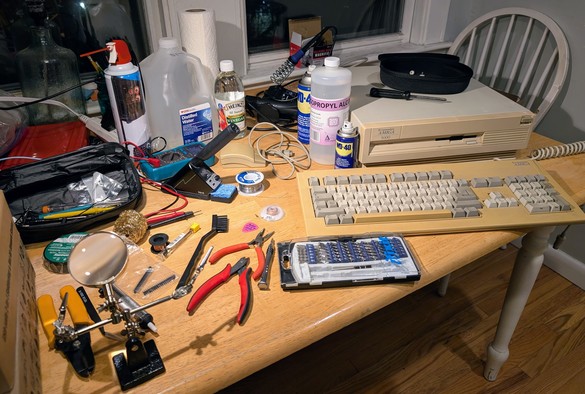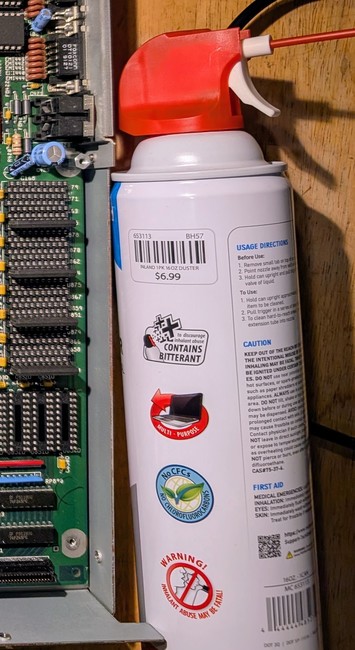Recent searches
Search options
The very first step after opening the A3000 case is blowing off all the dust.
Though I'm not too sure this compressed air can is safe on PCBs: if it condenses, it leaves white stains on the desk (you can see it briefly at the end of the video).
The label doesn't specify the exact composition of the "air", but there's a notice:
To discourage inhalant abuse
CONTAINS BITTERANT
And if you shake the can, there's a lot of liquid on the bottom. Did they forget to desiccate the air before compressing it??
If you spray sideways, the liquid pours out and freezes, leaving that white halo all around
Anyway, gotta choose your air wisely!
@codewiz The liquid in the can is literally compressed air. It's compressed so much it's partially liquid inside the can, which is why the directions state to always use it upright, so the liquid can "boil" back into air. If you have the can sideways or on it's side, that liquid air comes out, freezing what it touches as it boils off, including causing severe burns if you get it on your skin.
It's also how a heat pump or an air conditioner works, utilizing phase change of the refrigerant.
@anaerin I discarded this hypothesis because both nitrogen and oxygen liquefy at extremely low temperatures.
While I know that pressure can move the critical point, I know that air in scuba diving tanks doesn't liquefy even at 200 bar.
So... is the pressure in that air can much higher? Or perhaps the liquid part is another gas?
If some people like to inhale these cans, perhaps they contain ether or other organic compounds that give euphoria?
@anaerin ChatGPT says:
Inhaling from compressed air cans (intended for cleaning electronics, often containing propellants like difluoroethane or tetrafluoroethane) is a form of substance abuse sometimes called huffing.
...but would these liquefy at room temperature?
@anaerin GPT-4o says:
Yes, both difluoroethane and tetrafluoroethane can liquefy at room temperature (around 25°C or 298 K) under the pressures typically found in a compressed air can. These substances are chosen as propellants for precisely this reason: they can exist as both a liquid and a gas under moderate pressures and ambient conditions.
...which seems believable, and I'm too lazy to fact-check it.




